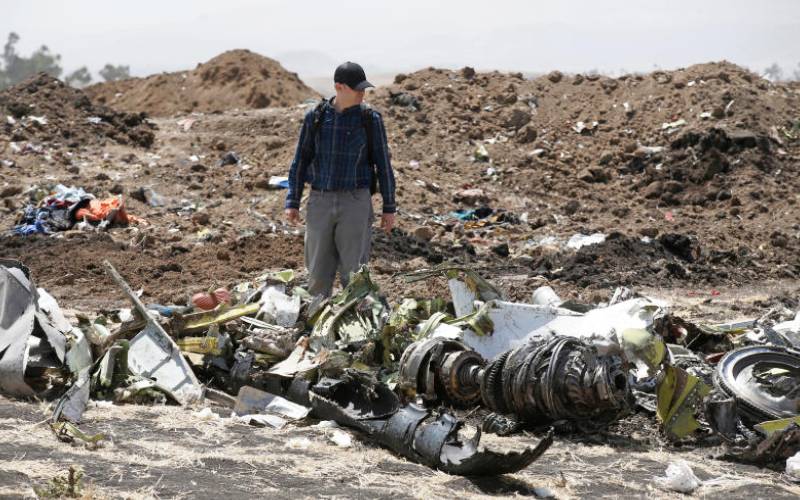×
The Standard e-Paper
Kenya's Bold Newspaper

A civil aviation investigator searches through the debris at the scene of the Ethiopian Airlines plane crash, in March last year. [File]
The ill-fated Ethiopian Airline jet ploughed into the ground at 844 feet per second, fresh details of the accident that occurred one year ago today have revealed.